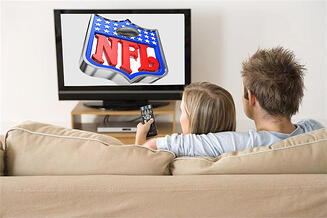 Diversity in the workplace has proven massive benefits for organizations that rely on innovative thinking. Contrary to what most people believe, however, diversity in business is not just about surrounding yourself with people who look different. It’s also about equipping your team with a wide array of approaches to a common challenge.You can imagine each of us having a diversity score – based on 3 dimensions – that fluctuates depending on the collective characteristics of the team. However, the score isn’t static: each of us can increase our individual and team diversity score at will. Let’s take a look at the three common dimensions of diversity to understand how we can do this:
Diversity in the workplace has proven massive benefits for organizations that rely on innovative thinking. Contrary to what most people believe, however, diversity in business is not just about surrounding yourself with people who look different. It’s also about equipping your team with a wide array of approaches to a common challenge.You can imagine each of us having a diversity score – based on 3 dimensions – that fluctuates depending on the collective characteristics of the team. However, the score isn’t static: each of us can increase our individual and team diversity score at will. Let’s take a look at the three common dimensions of diversity to understand how we can do this:
- Inherent Diversity
Inherent diversity includes race, ethnic background, gender…hardwired traits that we are born with/into and cannot be controlled. For better or worse, these traits can influence the way we perceive the world around us, and vice versa.
A McKinsey study shows the difference inherent diversity can make, finding that executive boards in the US with inherently diverse members enjoy a 95% higher return on equity than those without. Impressive! On the flipside, what is an example of the drawback to sameness? Ask Bertelsmann, whose all-male team turned down Bethenny Frankel’s pitch to launch a low-cal alcoholic beverage for women. They simply could not relate to the target market, and the unseized opportunity gave rise to Skinnygirl, the fastest growing spirit brand in history.
- Acquired Diversity
This dimension involves the ingrained experiences we collect throughout our lives that train us how to think and behave, such as educational background, professional expertise, and even experience abroad.
An Art History class might allow you to understand the context surrounding important works and to fully appreciate the artist’s vision. Raising children helps you value an uninterrupted night’s sleep and wholeheartedly empathize with new parents in a way that others simply cannot. Though we cannot dictate all life events, we do have a great deal of control over the diversity we acquire over time.
According to the Harvard Business Review, companies with leaders who exhibit 2-D diversity (that is, each leader possesses at least 3 inherent traits and 3 acquired traits) are 45% more likely to report growth.
While this is all wonderful, raising the level of inherent and acquired diversity at your organization (especially at the leadership level) is not something that is easily achieved. We believe a third dimension is needed; a dimension to help you raise your overall diversity score immediately with the human capital you already have: that third dimension is Inspired Diversity.
- Inspired Diversity
Through the development of our subject knowledge over time, mental models begin to take form and solidify in our minds. That’s natural, but these biases can also blind us to new opportunities and challenges. In order to increase our openness and mental agility, we must constantly identify opportunities to branch out from our immediate environment and learn how others might solve interesting challenges, focusing on how we might apply their insight to fit our purposes.
For example, touring a manufacturing facility can give fresh insight to the way we think about our internal processes and workflow. Interviewing an exceptional street performer could provide wisdom on courage and leadership. Perusing an exhibit at an art museum can help you reimagine your brand’s image through the artist’s lens.
When I run rapid innovation programs with clients, there is a clear trend among the super creative folks who consistently ideate at a higher level: They are renaissance people. They have many interests, are curious about many subjects, and partake in many activities that all contribute to having a wide array of perspectives. They have the unique ability to create using their past experience (acquired diversity) and also in-the-moment when they bring a specific business challenge to an outside activity (inspired diversity). They challenge themselves with new experiences and perspectives as often as possible.
When business requires innovation, pulling novel ideas out of thin air is simply not a realistic expectation; it’s about attacking a challenge from angles that have never been considered. And this level of thinking requires diverse individuals, with diverse minds, stimulated by diverse activities.

Andy Cole is a consultant for South Street Strategy Group where we use a multi-method approach to identify and test growth and innovation strategies for increased commercialization success.
 After a brutal winter, many of us in the Northeast are glad to finally begin our annual spring-cleaning, but we’ve noticed we aren’t the only ones looking for a fresh start. With confidence in the economy growing, there has been an uptick in established brands taking a fresh look at their brand strategy, an area they may have neglected during the recent tough economic times.For most, a brand refresh means creating a stronger platform for growth. To see evidence of this, one need look no further than recent TV commercials. Domino’s eliminated “Pizza” from their name, allowing for new items beyond their foundational menu offering. Meanwhile Buick promotes their redesigned cars through commercials with actors stating in disbelief, “That’s not a Buick.” Even Southwest has jumped on the bandwagon, highlighting that customers not only receive low fares and free checked bags, but some TLC when flying on one of their planes: “Without a heart, it’s just a machine.”
After a brutal winter, many of us in the Northeast are glad to finally begin our annual spring-cleaning, but we’ve noticed we aren’t the only ones looking for a fresh start. With confidence in the economy growing, there has been an uptick in established brands taking a fresh look at their brand strategy, an area they may have neglected during the recent tough economic times.For most, a brand refresh means creating a stronger platform for growth. To see evidence of this, one need look no further than recent TV commercials. Domino’s eliminated “Pizza” from their name, allowing for new items beyond their foundational menu offering. Meanwhile Buick promotes their redesigned cars through commercials with actors stating in disbelief, “That’s not a Buick.” Even Southwest has jumped on the bandwagon, highlighting that customers not only receive low fares and free checked bags, but some TLC when flying on one of their planes: “Without a heart, it’s just a machine.”


 Diversity in the workplace has proven massive benefits for organizations that rely on innovative thinking. Contrary to what most people believe, however, diversity in business is not just about surrounding yourself with people who look different. It’s also about equipping your team with a wide array of approaches to a common challenge.You can imagine each of us having a diversity score – based on 3 dimensions – that fluctuates depending on the collective characteristics of the team. However, the score isn’t static: each of us can increase our individual and team diversity score at will. Let’s take a look at the three common dimensions of diversity to understand how we can do this:
Diversity in the workplace has proven massive benefits for organizations that rely on innovative thinking. Contrary to what most people believe, however, diversity in business is not just about surrounding yourself with people who look different. It’s also about equipping your team with a wide array of approaches to a common challenge.You can imagine each of us having a diversity score – based on 3 dimensions – that fluctuates depending on the collective characteristics of the team. However, the score isn’t static: each of us can increase our individual and team diversity score at will. Let’s take a look at the three common dimensions of diversity to understand how we can do this:
 In an effort to counter the fear-based culture that inhibits innovation at many companies, some leaders (
In an effort to counter the fear-based culture that inhibits innovation at many companies, some leaders ( Andy Cole is a consultant for South Street Strategy Group where we use a multi-method approach to identify and test growth and innovation strategies for increased commercialization success.
Andy Cole is a consultant for South Street Strategy Group where we use a multi-method approach to identify and test growth and innovation strategies for increased commercialization success. 
 Lindsay is an Associate Consultant at South Street Strategy Group.
Lindsay is an Associate Consultant at South Street Strategy Group.